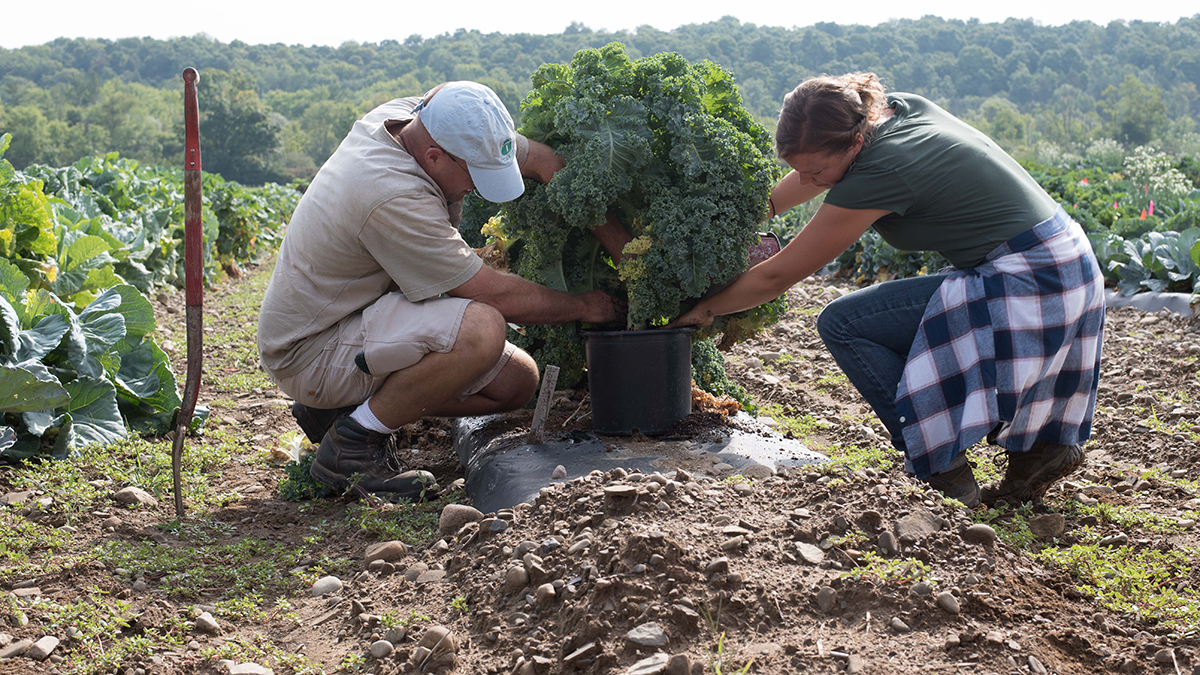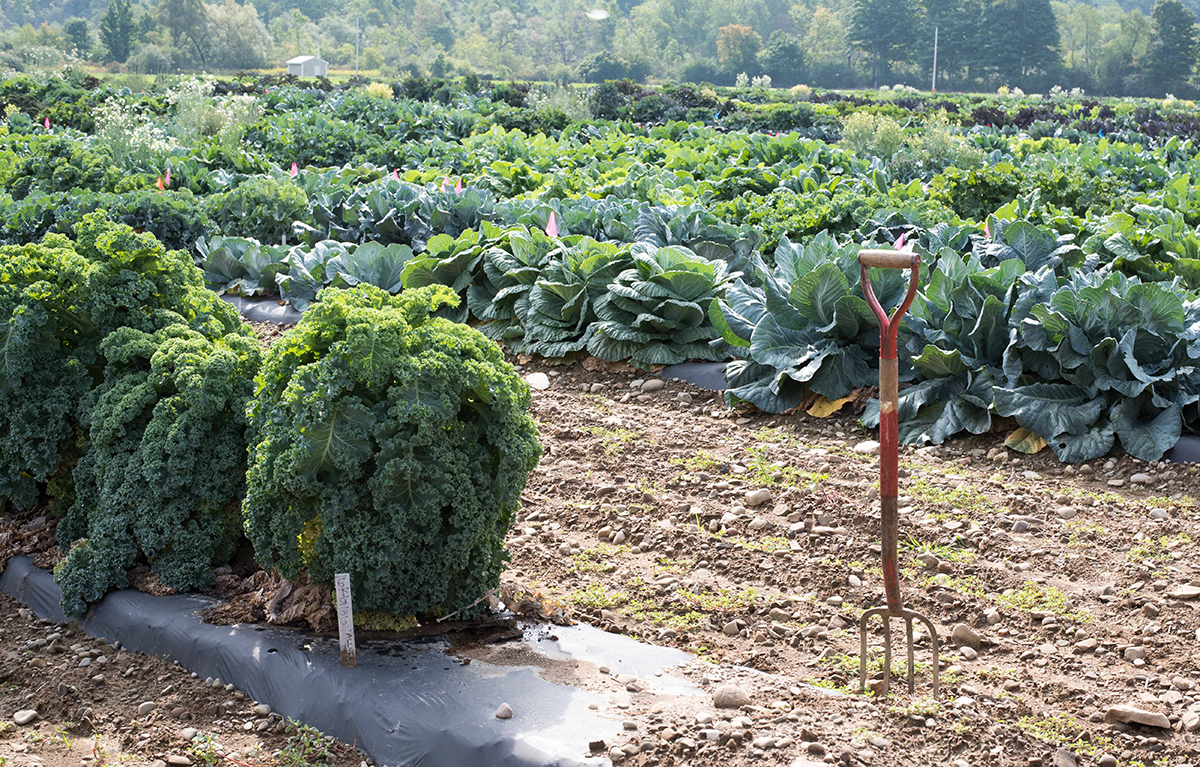Plant breeders take cues from consumers to improve kale
By Matt Hayes

A Cornell program is reimagining kale – its color, shape and even flavor – in a bid to breed the naturally biodiverse vegetable for consumer satisfaction.
Traits of importance for plant production, such as resistance to disease, pests and drought are often a major focus for plant breeders. Consumers, however, are usually more interested in the culinary and aesthetic qualities of vegetables that directly impact their preparation in the kitchen.
Cornell vegetable breeder Phillip Griffiths, a professor in the Horticulture Section of the School of Integrative Plant Science, and doctoral student Hannah Swegarden have embarked on a program to identify the different leaf shapes, colors, flavors and textures favored by consumers, and breed for those traits.
Kale is the same species as many other important agricultural crops consumed around the world. Cabbage, broccoli, collard, cauliflower, kohlrabi, Brussels sprouts, and kailaan, like kale, are all members of the species Brassica oleracea. The natural genetic diversity available in the species provides opportunities to further develop and promote a nutritionally important crop, according to Griffiths, who first started working with African kale or “sukuma wiki” for Kenyan consumers more than a decade ago. At that time, kale was still relatively uncommon in Western diets.
“We have been able to identify and generate diversity through natural cross-breeding, enabling selection of unique types that may be important not just for international and emerging markets, but also for supporting the production of a crop that’s highly nutritious and can promote new markets in the U.S.,” Griffiths said.
Griffiths and Swegarden are focusing efforts on developing new kale cultivars, including the evaluation of hybrid combinations. New cultivars in Griffiths’ breeding pipeline will push consumer expectations for kale, blurring the current color boundaries of greens and purples and introducing a range of new leaf and plant shapes.
“Kale in the U.S. is a relatively new crop. Aside from being nutritious and somewhat green, it hasn’t been well defined what traits consumers want in kale,” Swegarden said. “The diversity we have within the Cornell breeding program can be applied to understand current consumer preference and provide markets with in-demand products.”

As part of the program, Swegarden has been gathering feedback from seed producers, growers, supermarket managers and consumers. She plans to use the information to breed for consumer quality traits.
She is partnering with Cornell’s Sensory Evaluation Center to perform consumer trials to develop a consumer kale lexicon and establish a trait hierarchy that can be used to guide the breeding program. This data will determine which hybrids and breeding lines to select in the field. Swegarden predicts that in the next few years consumers will see an even richer diversity of leafy greens available to them.
“We are connecting with consumers to find out exactly what they want, and, if successful, we will be able to deliver marketable cultivars that appeal to both a consumer’s eyes and taste buds,” she said.
The research is supported by the U.S. Department of Agriculture Specialty Crop Block Grant Program.
Matt Hayes is managing editor and social media officer for the College of Agriculture and Life Sciences.
Media Contact
Get Cornell news delivered right to your inbox.
Subscribe